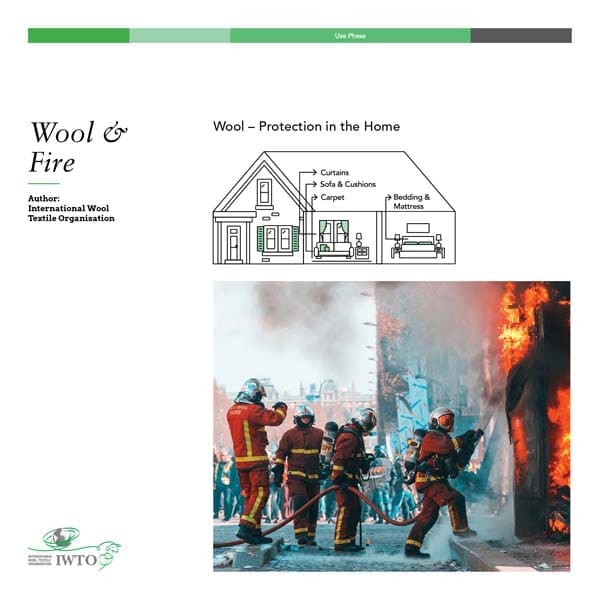Wool is naturally flame resistant and offers a greater level of fire safety than other fibres. In addition, wool does not melt, drip or stick to the skin when it burns.
Wool’s inherent fire resistance comes from its naturally high nitrogen and water content, requiring higher levels of oxygen in the surrounding environment in order to burn. Wool may be ignited if subjected to a significantly powerful heat source, but does not normally support flame, and will instead smoulder, usually only for a short time. In addition, wool’s cross-linked cell membrane structure will swell when heated to the point of combustion, forming an insulating layer that prevents the spread of flame. This also means that wool produces less smoke and toxic gas than synthetic fibres.
Wool’s flame-resistant properties make it an ideal fibre for interiors such as carpets, curtains, upholstery and bedding, helping to reduce the risk of fire spreading within a house or other building. Wool textiles are also used widely in personal protective equipment (PPE) to protect firemen, military personnel and anyone else exposed to fire or explosives. Wool’s characteristic of only smouldering and not melting or dripping onto skin, can itself be a lifesaver.

